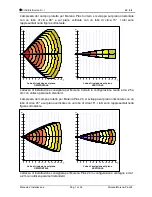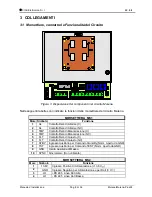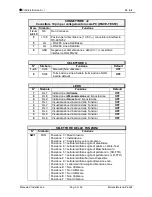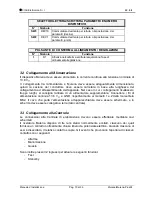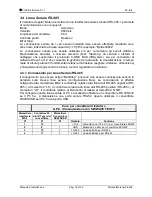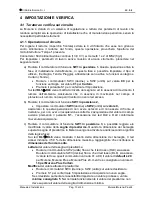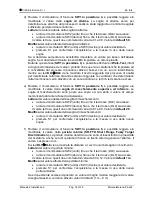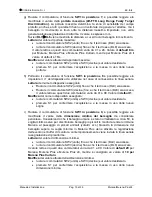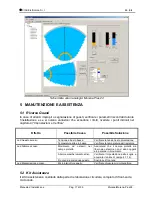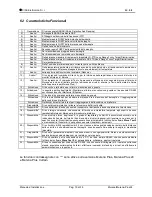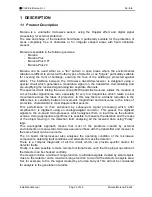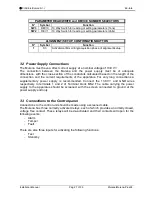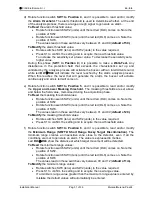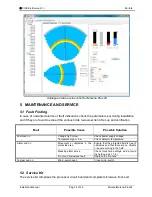
CIAS Elettronica S.r.l.
Ed.
.2.4
Installation Manual
Pag. 20 of 36
Murena/Murena-Plus24
1 DESCRIPTION
1.1 Product Description
Murena is a volumetric microwave sensor, using the Doppler effect and digital signal
processing, for external protection.
The size and shape of the detection field make it particularly suitable for the protection of
areas completely free of obstacles or for irregular shaped areas with fixed obstacles
present.
Murena is available in the following versions:
-
Murena
-
Murena Plus
-
Murena Plus CF1
-
Murena Plus 24
Muren
a can be used either as a “fan” pattern in open areas where the environmental
situation is difficult to protect with other types of detector or as “fingers” particularly suitable
for covering the front of buildings, ensuring the face of the building is protected against
attack.. The interface between the microwave transmitter-receiver is designed using a
special circuit which generates a modulation signal on the transmitter, demodulating and
pre-amplifying the received signal using two separate channels.
This special circuit, linking the new concept MW transmitter-receiver, allows the creation of
a much better signal/noise ratio, especially for very low frequencies, which relate to slow
movements across the lobes of protection. In this way there is a drastic reduction in the
differences in sensitivity between movements longitudinal and transverse to the lobes of
protection, characteristic in most Doppler effect sensors.
This performance is then enhanced by subsequent signal processing which, after
amplification, is digitised using an analogue/digital convertor. This passes the digitised
signals to the on-board microprocessor, which analyses them, in real time as the situation
evolves. Using appropriate algorithms it is possible to measure the distance and the mass
of the object moving in the detection field, analysing all the received data using “Fuzzy”
logic.
This avant-garde approach means that most of the problems created by external
environments on mono-static microwave sensors (those with the transmitter and receiver in
the same head) can be overcome.
The on board microprocessor also analyses the operating condition of the microwave
components, detecting fault conditions and attempts to mask the detector.
There is a complex diagnostic of all the circuit, which can provide specific alarms for
detector faults.
Finally, it is also possible to make remote functional tests, such that the proper operation of
the detector can be checked centrally.
The design includes a minimum range function to eliminate signals created by small objects
close to the detector and a maximum range function to de-limit the detector analysis area.
Set, for example, to 8m, the signal created by a human body at 10m will not be considered
for analysis in the generation of alarms.
Summary of Contents for Murena
Page 38: ...NOTE...
Page 39: ...NOTE...


